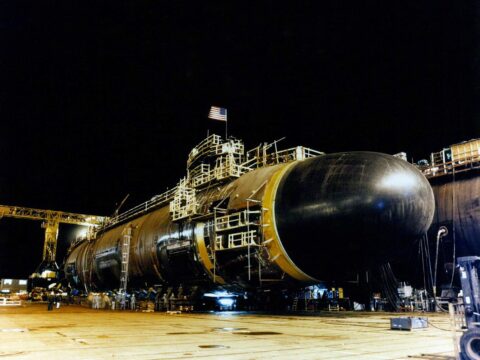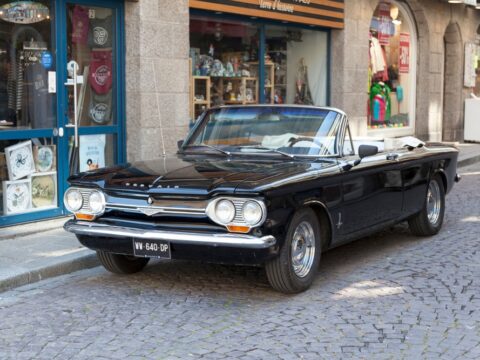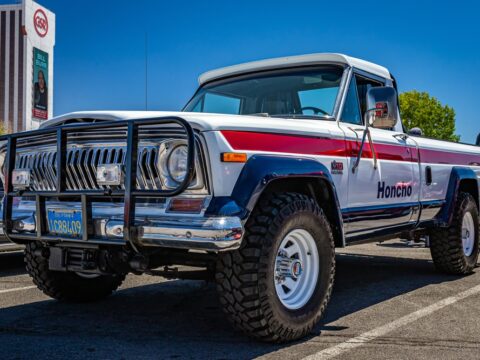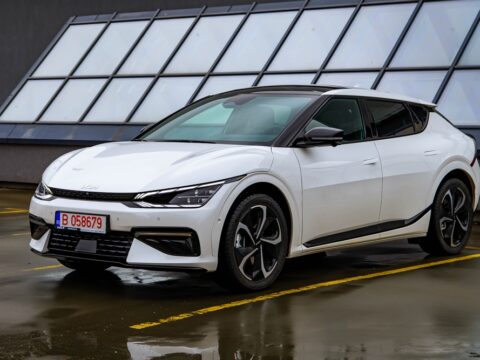Minivans have long been a staple for families, offering the perfect blend of space, comfort, and reliability. While newer models boast modern features, there’s something special about the old-school minivans that many families still adore. These classics bring back memories of road trips, soccer games, and countless adventures. In this list, we’ll take a look at 20 old-school minivans that continue to hold a special place in the hearts of families everywhere.
Contents
Dodge Caravan (First Generation)
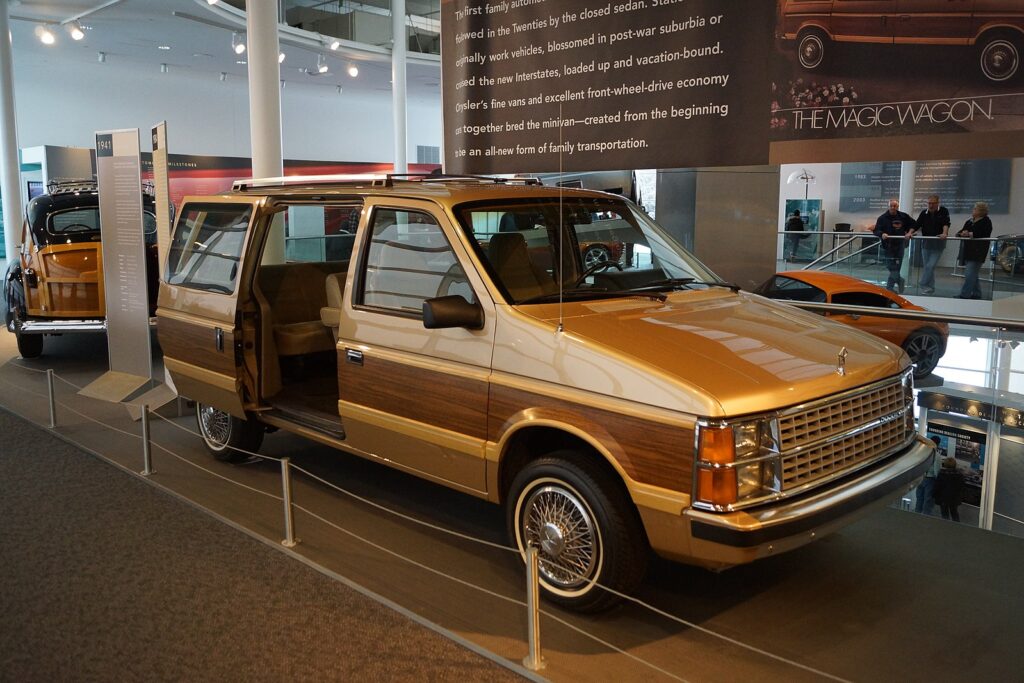
The Dodge Caravan, introduced in 1984, was a game-changer in the minivan market. It was the first vehicle to offer a perfect blend of car-like handling and van-like space, making it a favorite among families. Its compact size, combined with a spacious interior and the ability to seat up to seven passengers, made it an ideal family vehicle. The Caravan’s success paved the way for the minivan’s popularity, and its legacy continues to be cherished by those who experienced its practicality firsthand.
Plymouth Voyager
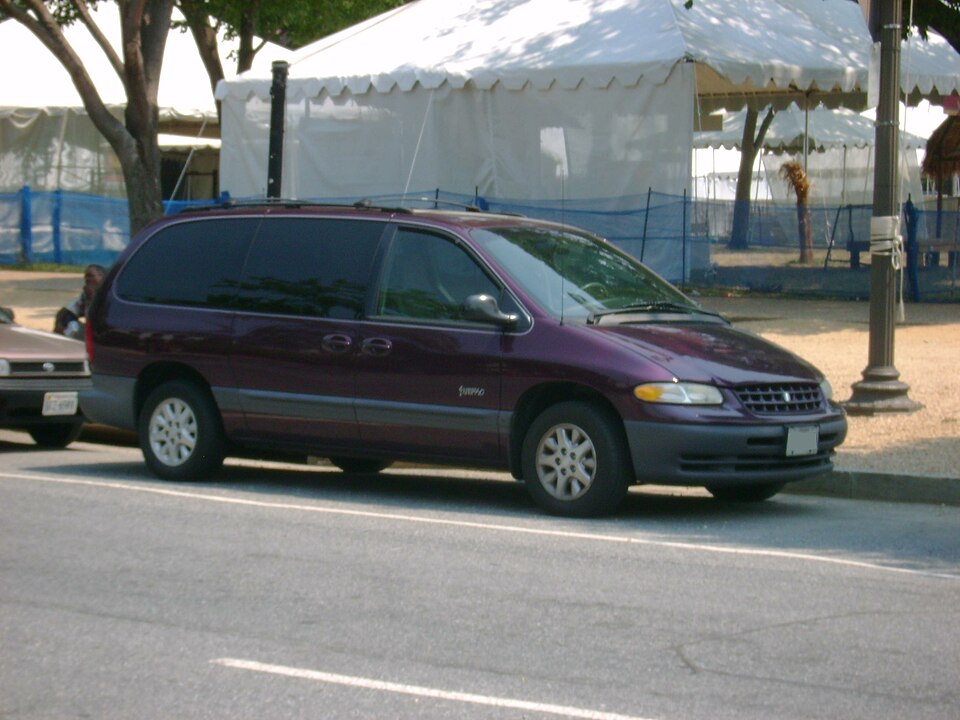
The Plymouth Voyager, launched alongside the Dodge Caravan, was another trailblazer in the minivan segment. Known for its versatility and family-friendly features, the Voyager offered various seating configurations, making it easy to adapt to different needs. Its reliable performance and practical design, including sliding side doors, endeared it to families who needed a dependable vehicle for daily use and road trips alike.
Chrysler Town & Country (Early Models)
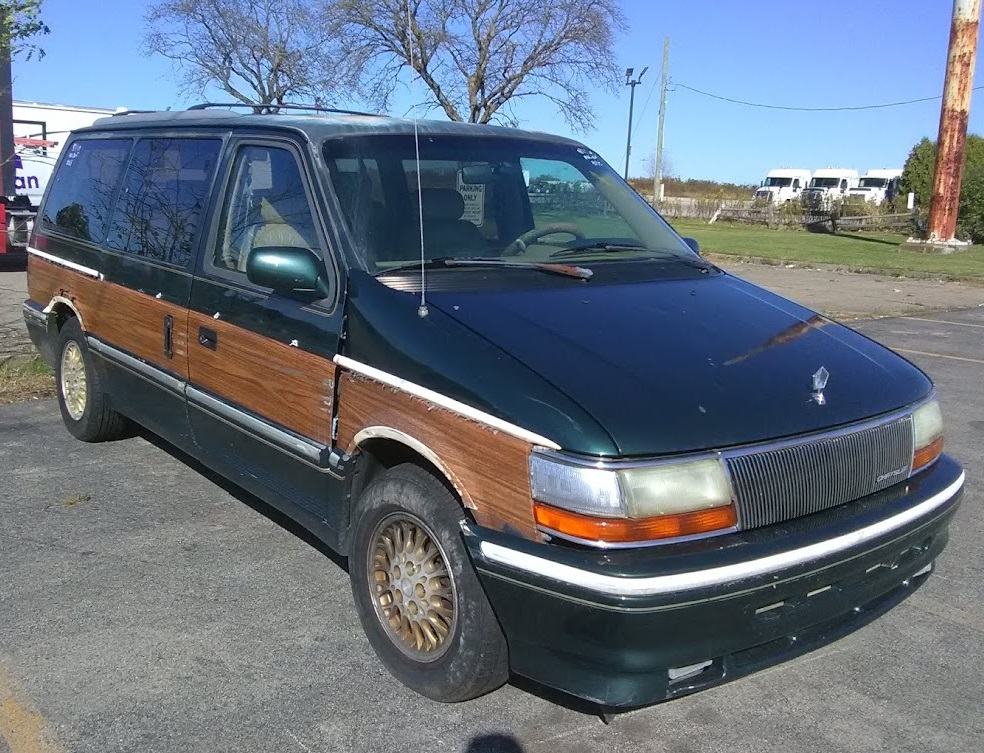
The Chrysler Town & Country added a touch of luxury to the minivan market when it was introduced in 1990. It featured upscale amenities such as leather seats and wood-grain trim, which set it apart from other minivans at the time. Despite its premium features, it retained the practical elements that made minivans popular, including ample cargo space and seating for up to seven. Families who wanted a blend of luxury and utility found the Town & Country to be the perfect fit.
Toyota Previa

The Toyota Previa, introduced in 1990, was a standout with its futuristic design and mid-engine layout. Known for its durability and unique egg-shaped body, the Previa offered a smooth ride and plenty of interior space. Its reliability, typical of Toyota vehicles, made it a favorite among families who valued a vehicle that could handle the demands of daily life while offering something different from the standard minivan fare.
Ford Aerostar

The Ford Aerostar, launched in 1985, was Ford’s first attempt at a minivan, and it quickly became a popular choice for families. Its rear-wheel-drive layout was unique among minivans, providing a towing capacity that was unusual for the segment. The Aerostar’s boxy design maximized interior space, making it a practical option for families needing a vehicle that could handle both passengers and cargo with ease.
Chevrolet Astro
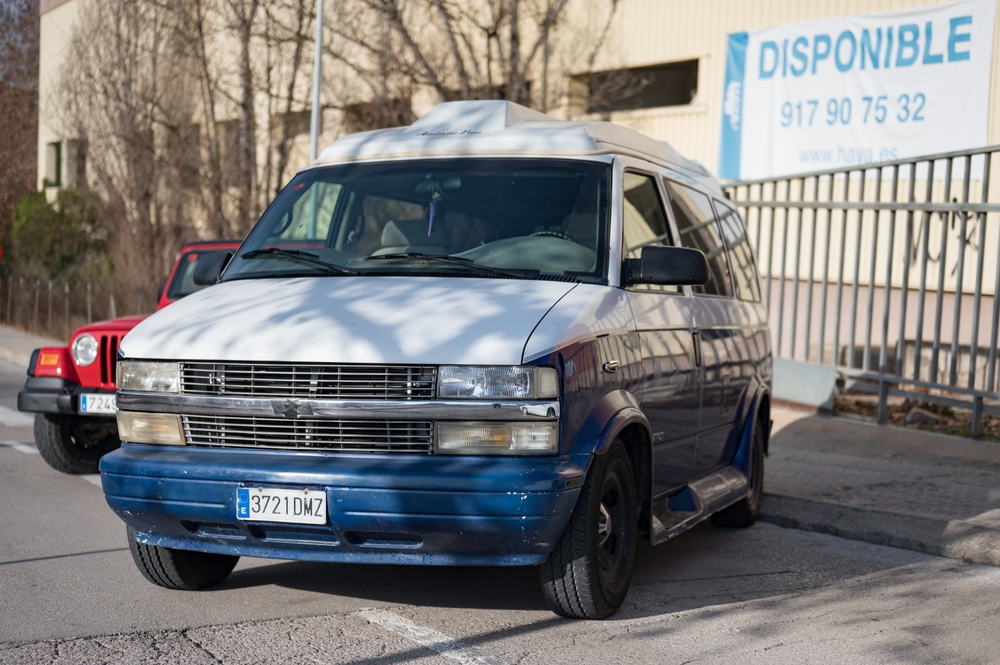
The Chevrolet Astro, introduced in 1985, was a rugged and versatile minivan that appealed to families with active lifestyles. Its truck-based platform gave it a sturdy build and the ability to tow, making it a favorite for families who needed more than just a people mover. The Astro’s spacious interior and durable design made it a reliable choice for those who required a vehicle that could handle both family duties and outdoor adventures.
Nissan Quest (First Generation)

The first-generation Nissan Quest, introduced in 1992, was a joint venture with Ford, sharing its platform with the Mercury Villager. The Quest offered a smooth ride, a spacious interior, and innovative features like a removable second-row bench seat. Its compact size made it easy to maneuver, and its reputation for reliability made it a popular choice for families looking for a dependable minivan.
Mazda MPV

The Mazda MPV, introduced in 1988, was unique in that it offered both rear-wheel-drive and all-wheel-drive options. This flexibility, combined with a spacious interior and car-like handling, made it a favorite among families who needed a versatile vehicle. The MPV’s sliding rear door and comfortable seating for up to seven passengers made it a practical choice for daily family use and longer trips.
Volkswagen EuroVan
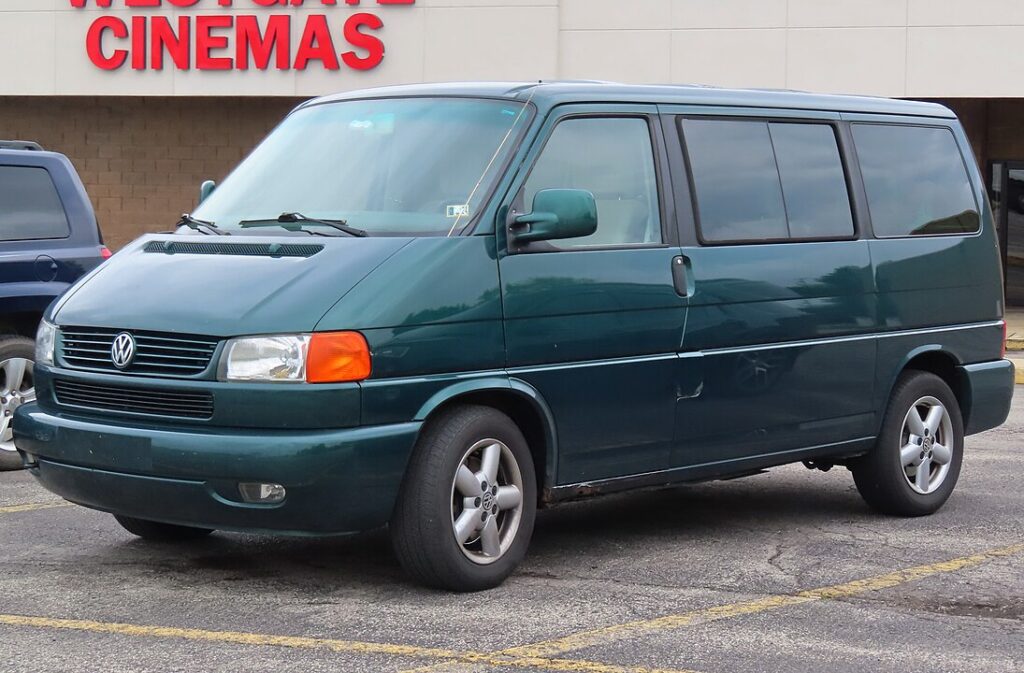
The Volkswagen EuroVan, introduced in 1992, offered a European flair to the minivan market. Known for its boxy design and spacious interior, the EuroVan could seat up to seven passengers comfortably. Its rear-engine layout provided a unique driving experience, and its reputation for durability made it a reliable choice for families who wanted something different from the typical American minivan.
Mercury Villager
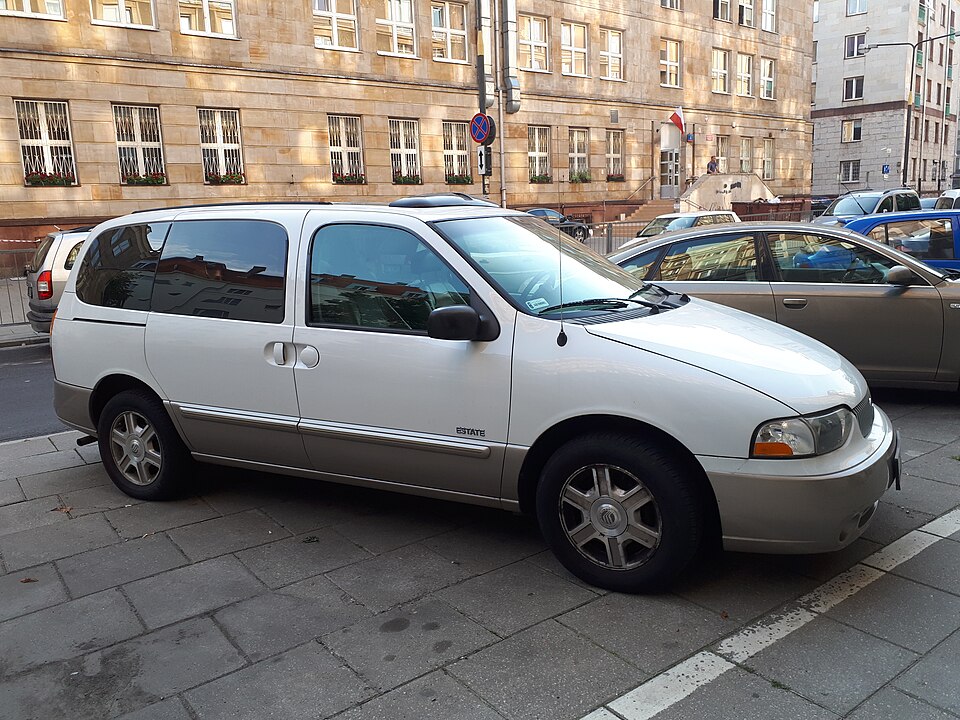
The Mercury Villager, a twin of the Nissan Quest, was introduced in 1993 and quickly became a popular choice for families. It offered a comfortable ride, a well-appointed interior, and the flexibility of removable seating. The Villager’s compact size made it easy to drive in urban environments, while its spacious interior ensured that it could handle the needs of growing families.
Pontiac Trans Sport
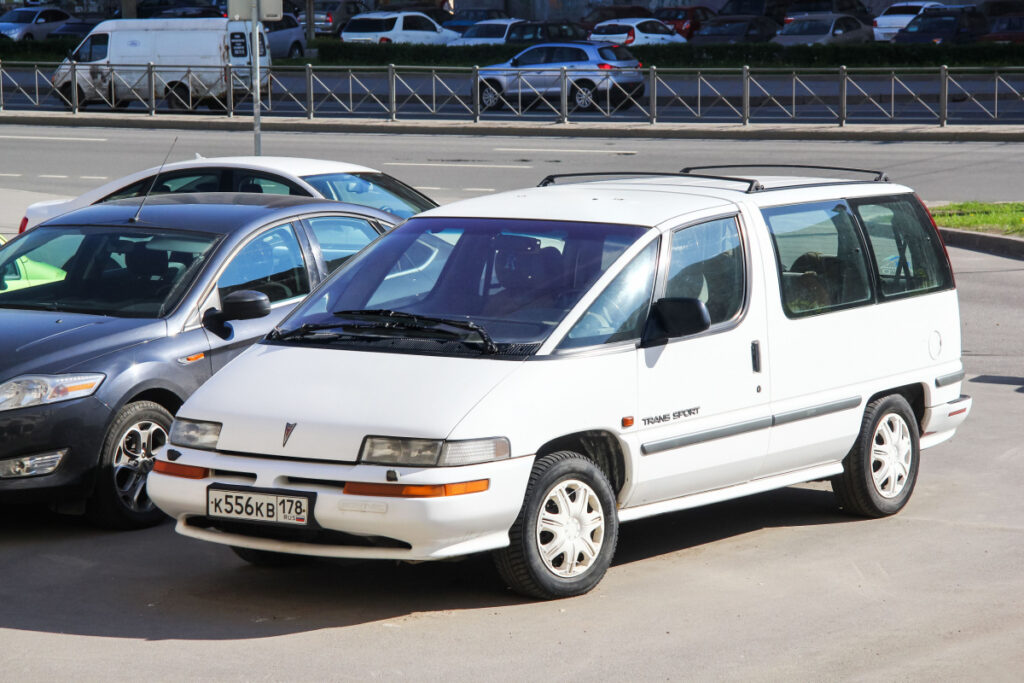
The Pontiac Trans Sport, introduced in 1990, was known for its futuristic styling, which earned it the nickname “Dustbuster” due to its sleek, elongated design. Despite its unconventional looks, the Trans Sport offered a spacious interior, flexible seating arrangements, and a smooth ride. It appealed to families who wanted a minivan with a bold design and practical features.
Oldsmobile Silhouette
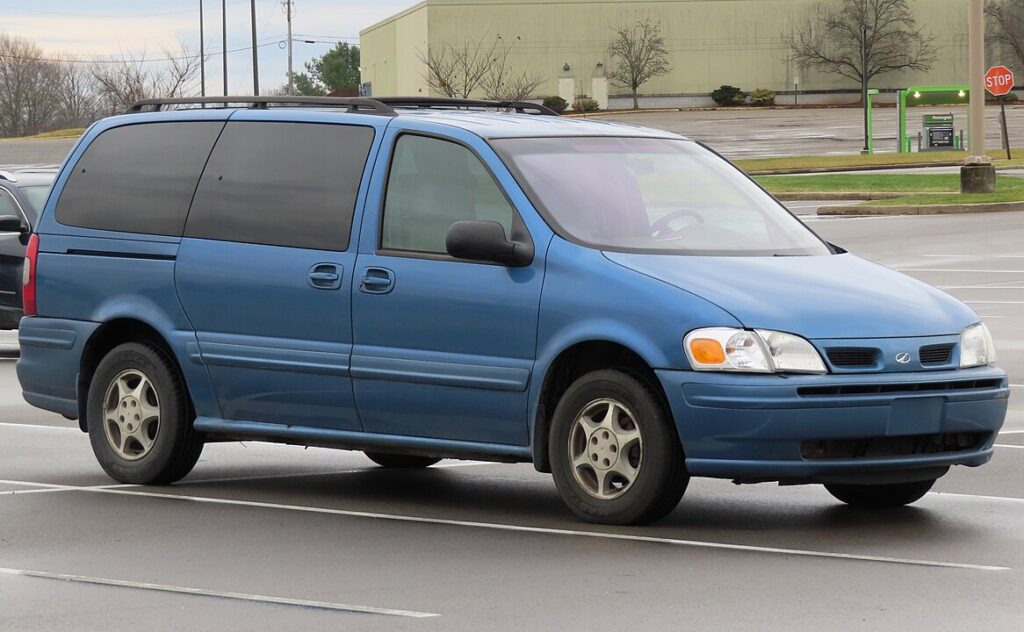
The Oldsmobile Silhouette, another GM minivan, was introduced in 1990 as a more luxurious alternative to the Pontiac Trans Sport. It offered leather seats, a premium sound system, and a power sliding door, making it an attractive option for families looking for a more upscale minivan experience. The Silhouette’s combination of comfort and practicality ensured its place as a beloved family vehicle.
GMC Safari
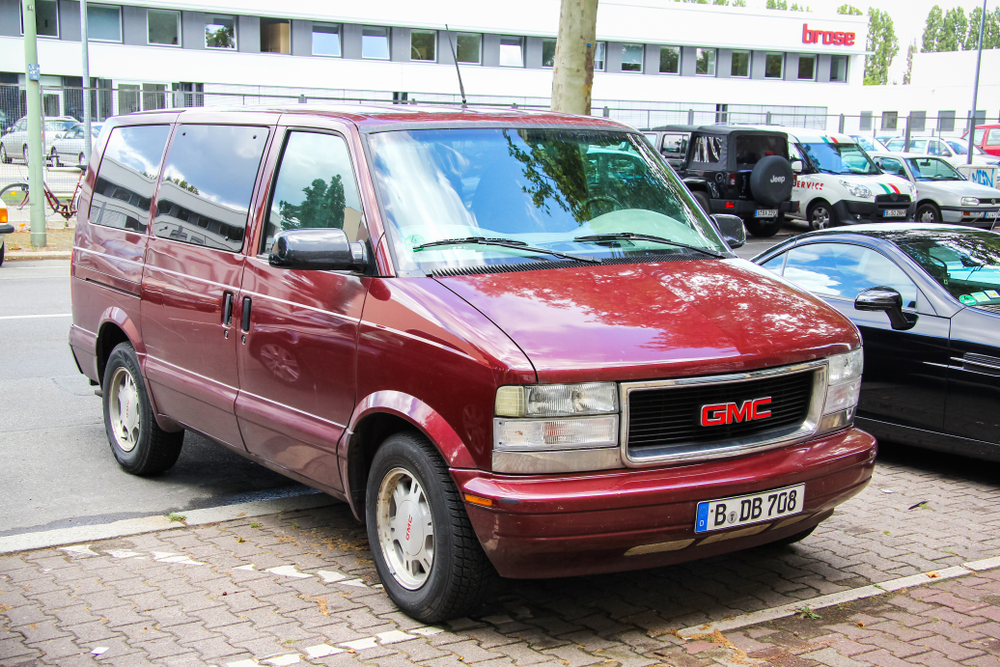
The GMC Safari, a sibling of the Chevrolet Astro, was introduced in 1985 and shared its rugged, truck-like platform. Known for its durability and towing capability, the Safari appealed to families who needed a minivan that could handle heavy loads and off-road adventures. Its spacious interior and reliable performance made it a go-to choice for those who needed a versatile and sturdy family vehicle.
Chrysler Grand Voyager

The Chrysler Grand Voyager, a longer version of the popular Voyager, offered even more space and comfort for families. Introduced in 1987, the Grand Voyager featured a more powerful engine and upgraded interior options, making it a top choice for larger families or those who needed extra cargo capacity. Its reputation for reliability and practicality ensured that it remained a family favorite for years.
Ford Windstar
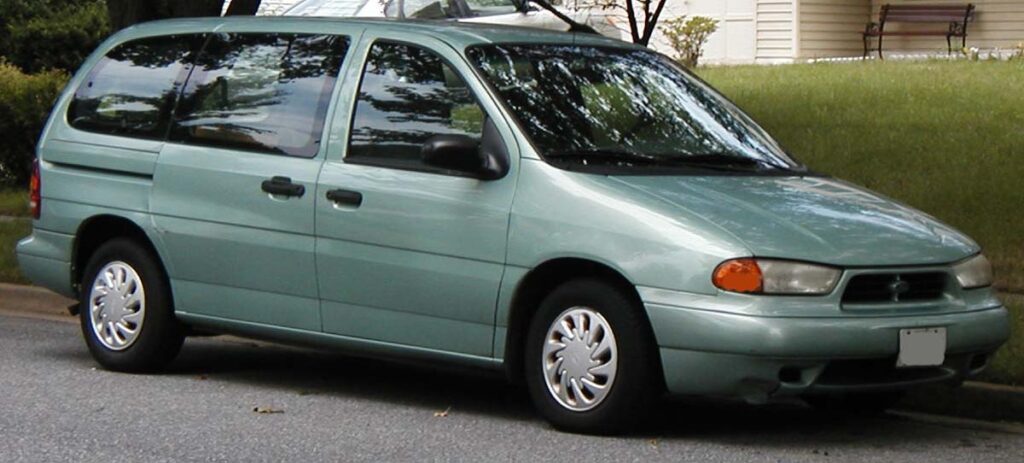
The Ford Windstar, introduced in 1995, was Ford’s second attempt at a minivan and was designed to replace the Aerostar. It featured front-wheel drive, which improved handling and fuel efficiency, and offered a spacious interior with advanced safety features like anti-lock brakes and dual airbags. The Windstar’s blend of comfort, safety, and practicality made it a popular choice for families during the 1990s.
Mitsubishi Expo LRV
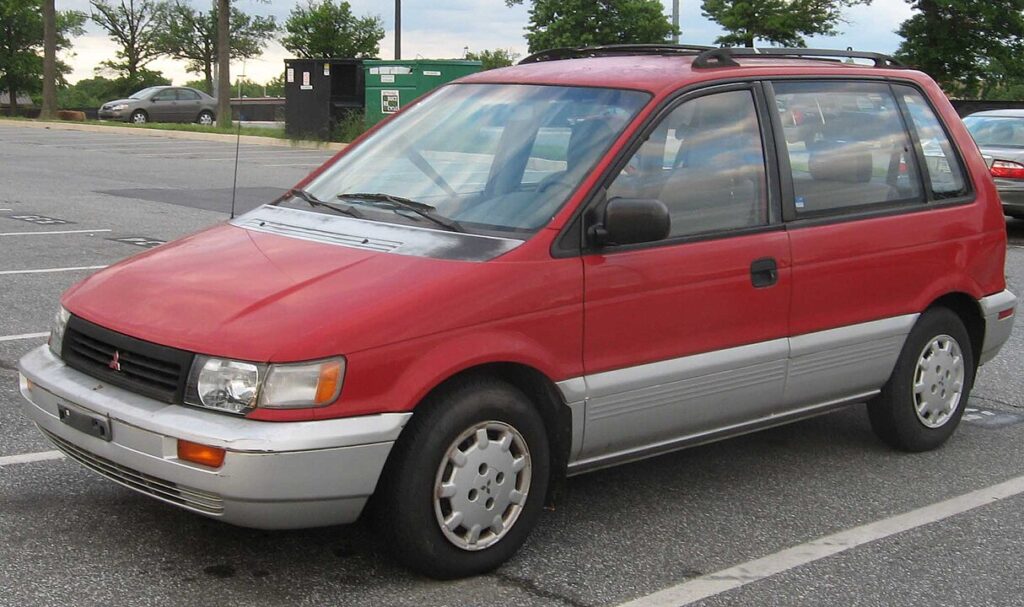
The Mitsubishi Expo LRV, introduced in 1992, was a compact minivan that offered a unique blend of versatility and efficiency. Its tall, boxy design maximized interior space, making it a practical choice for small families or those needing a flexible vehicle for city driving. The Expo LRV’s affordability and fuel efficiency made it an appealing option for budget-conscious families.
Renault Espace (Early Models)
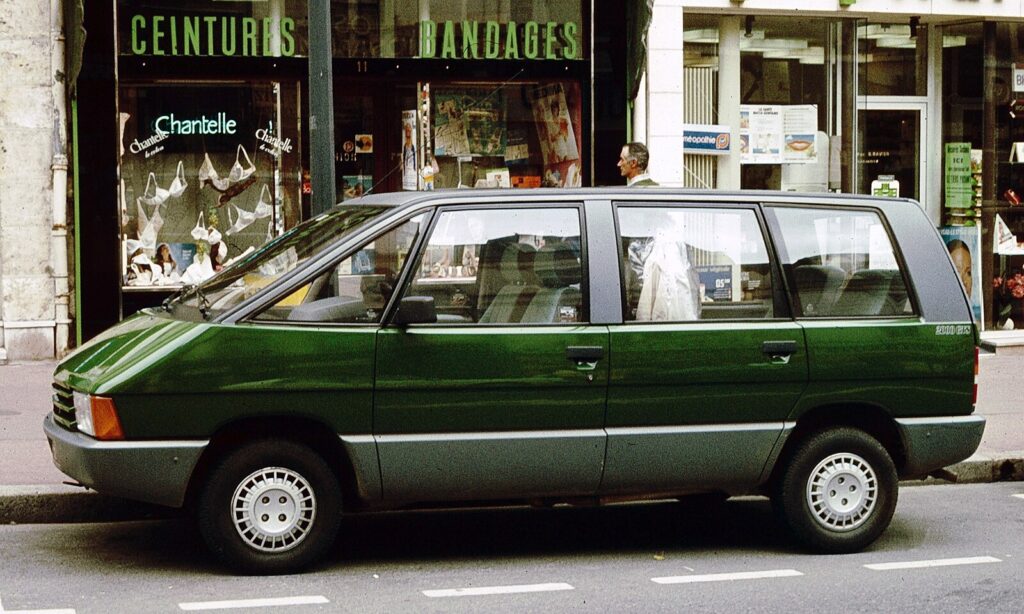
The Renault Espace, introduced in 1984, was one of the first minivans in Europe and quickly became a popular family vehicle. Its innovative design featured a high roofline and a spacious, modular interior that could be configured in various ways. The Espace’s reputation for comfort and versatility made it a favorite among European families, and its influence extended to the global minivan market.
Dodge Grand Caravan

The Dodge Grand Caravan, a longer version of the original Caravan, was introduced in 1987 and offered even more space for families. It featured a powerful V6 engine, comfortable seating for up to seven passengers, and a spacious cargo area. The Grand Caravan’s combination of performance, comfort, and reliability made it a staple in American households for decades.
Chrysler Pacifica (Original Crossover Version)
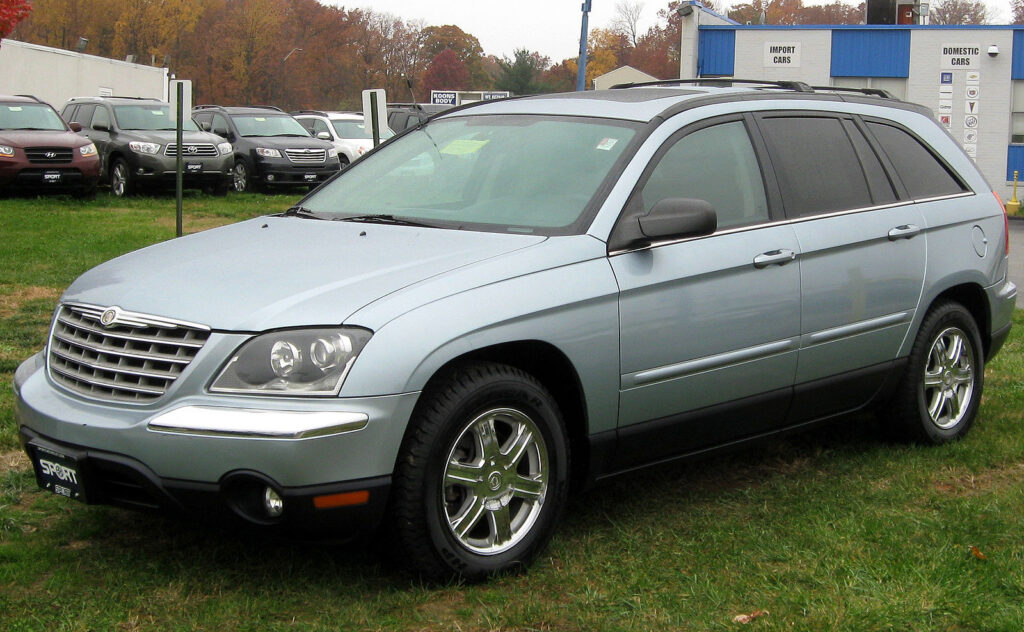
The original Chrysler Pacifica, introduced in 2004, was a crossover that combined the best features of a minivan and an SUV. It offered a stylish design, a luxurious interior, and the versatility of three-row seating. Families who wanted the space of a minivan without the traditional boxy design found the Pacifica to be an attractive option, and its unique blend of features made it a beloved vehicle.
Kia Sedona (First Generation)
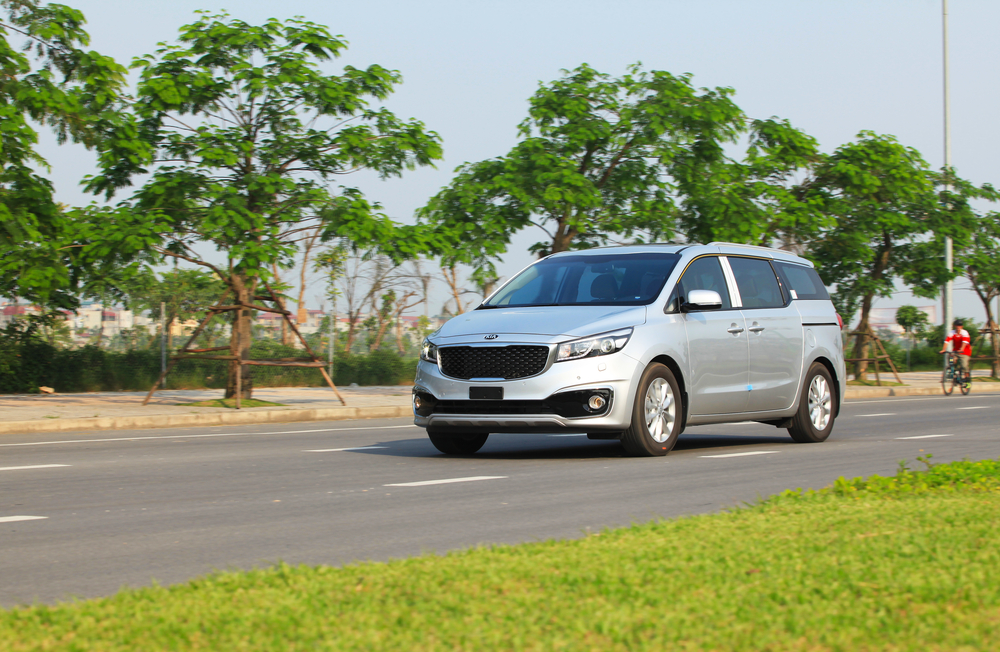
The first-generation Kia Sedona, introduced in 2002, offered an affordable alternative to more established minivan brands. Despite its lower price, the Sedona didn’t skimp on features, offering a spacious interior, comfortable seating, and a reliable V6 engine. Its affordability and practicality made it a popular choice for families looking for a budget-friendly minivan.
This article originally appeared in MyCarMakesNoise.
More from MyCarMakesNoise
15 Iconic Car Designs That Influenced the Industry

Throughout the history of the automotive industry, certain car designs have stood out for their groundbreaking impact on the market and culture. These iconic vehicles defined their eras and set new benchmarks in performance, aesthetics, and technology. Read More
10 Amazing Details About the Chevrolet Corvette

The Chevrolet Corvette has captivated car enthusiasts for decades with its blend of cutting-edge technology, sleek design, and high-performance capabilities. Since its debut in 1953, the Corvette has evolved into an iconic sports car, renowned for pushing the boundaries of automotive innovation. Read More
10 Extreme Off-Road Vehicle Mods for Adventurous Drivers

Standard vehicles often fail to provide the necessary durability and performance for those who crave adventure and the thrill of the unbeaten path. Extreme off-road modifications transform everyday vehicles into powerful machines capable of tackling the most challenging terrains. Read More

